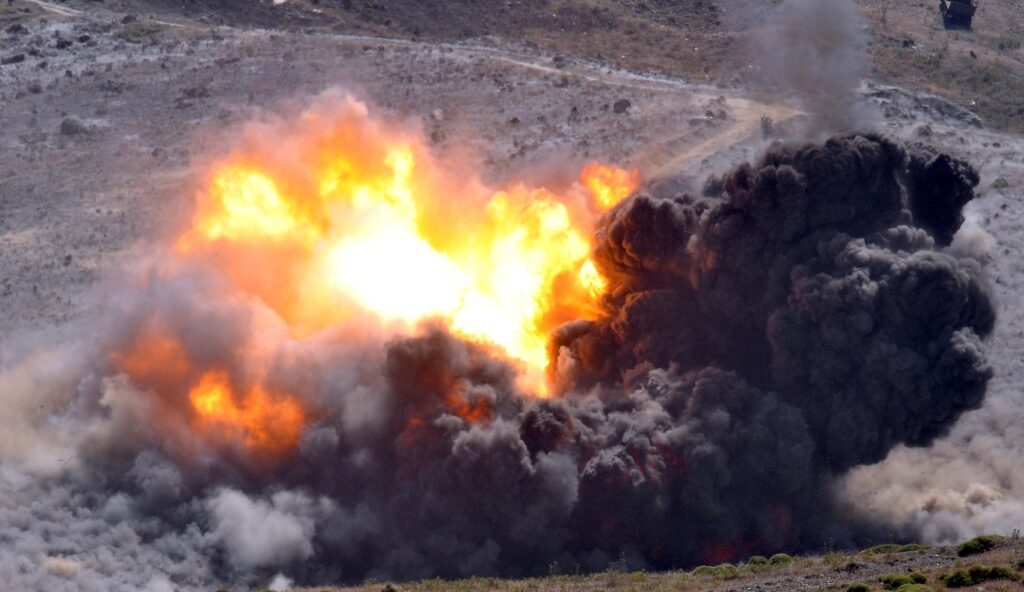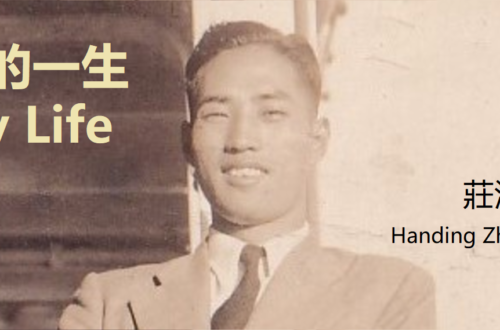
8. Bhamo Seven Months 1941.10 to 1942.5
In the summer of 1941, in order to increase the water transport capacity from Yangon to Bhamo via the Irrawaddy, the Yangon branch petitioned to strengthen Bhamo’s transport capacity. This plan was managed by C.P. in charge, built warehouses, increased vehicles, and planned to expand the establishment of Bhamo Transportation Office. Zhao Tingzhen, who was in the Singapore branch, would be appointed as the director of Bhamo Office. When Zhao Tingzhen arrived in Yangon, unexpectedly C.P. had resigned. However, Shen Shihua, the new director of the Yangon branch, maintained the previous discussion and still sent Zhao Tingzhen to Bhamo. Zhao Tingzhen came to Yangon alone, because I was working under him in the two branches of Hong Kong and Singapore, so he directed me to Bhamo. We took a train to Mandalay, the old capital, and then took a ferry to Bhamo. At that time, there were about seven or eight people in Bhamo, and there were not many vehicles. Fu Hexuan presided over the work there. Two warehouses and one oil depot were built in the nearby forest, and one had been completed.
Bhamo Transportation Office was established, with four departments of general affairs, accounting, transportation, and inspection. The second squadron of transportation vehicles had more than 60 vehicles. There also were a repair workshop, (Hosted by He Zhijin from Zhejiang University, after the death of Shen Dingsan, I have seen him once, and he also worked in Shanghai and have already retired) and a radio station. Zhao promoted me as the head of the transportation section, and Fu Hexuan was the commissioner to assist. The two of us had been getting along well in Singapore. Fu was kind, so we can cooperate with each other. As the business expanded and the staff increased, the new warehouse began to be used. Originally, the transportation volume was small and there were no written rules and regulations. First of all, based on my work experience in the past few years, I planned and formulated the system statements of warehouse entry and exit, transportation, etc., to start well and implement them without causing any disorder, and results would soon be effective. The fleet, inspections, repairs, and radio were not actually under the jurisdiction of the office, and were directly led by the superior. Later, some personnel were transferred from Haiphong Sub-office and Yangon Sub-office, and Shen Huilin was also transferred here.

Bhamo was the county governance, there were county government, police station, customs, shipping company, gasoline company (BOC), etc., and I got along well, especially after the outbreak of the Pacific War on December 7, it was even more convenient, of course. It is caused by the situation, not our personal strength.
In March 1942, the Yangon branch retreated hurriedly without notifying Bhamo. Some jobs needed to be consulted, some business transportation needed to be contacted, and some situations needed to be understood. Director Zhao was originally planned to rush to Lashio, but Bhamo had no deputy director at the time, so it might not be appropriate to leave. So Zhao sent me to Lashio. After I arrived in Lashio, I learned that the Yangon sub-office first evacuated to Lashio to stand by, but some personnel had already been withdrawn to China. The situation in Lashio was chaotic, with alarms during the day and enemy air strikes. I lived in the dormitory of the Military Engineering Department. I saw Chen Ligang, Kwong Rongzhong, Zhang Zuping, Ma Diyuan, Zhang Zhong, etc. from the Transportation Department of Yangon, and learned that there were no supplies in transit in the Irrawaddy River. When asked how Bhamo should respond in the future, the leader (Yu Feipeng did not meet) only said that he would inform us.
At that time, Zhang Chong, the team leader of the Yangon sub-office, was an acquaintance. After the Yangon sub-office retreated, there was car surplus. He assigned one to Director Zhao. Knowing that I was promoted to the head of the transportation section, he gave me a Chinese Army No. 3 jeep. Asked me to drive and leave without going through any formalities. Because of the chaotic situation at the time, a lot of things were lost and discarded. So you were able to make your own claim. I hired a driver to drive the car back to Bhamo, and I would return to Bhamo the day after by driving the jeep. Yangon branch office Wang Yinghan was transferring to Bhamo, he was from China National Bank, first in the Singapore branch, and then transferred to Yangon. I gave him a ride to Bhamo in my jeep. Lashio was from Bhamo about 200 kilometers, and a section of 40 to 50 kilometers was a one-way road that required night driving. When I drove safely back to Bhamo the next morning, I said that I had only learned to drive a few times when I was in Hong Kong. This time, I had no accident at all. Afterwards Wang Yinghan said: “if I had known this before, I would not ride your car to Bhamo. But now it’s safely arrived, and you are not bad on the way”. Wang Qinan informed me that Wang Yinghan has now retired in San Francisco.
 Image by Melk Hagelslag from Pixabay
Image by Melk Hagelslag from Pixabay
In April, Yu Feipeng called from Kunming, saying that the Bhamo team would be strengthened, and two Americans, who were technicians for the management and repair of the team, would be sent to rectify and assist the team. Another telegram informed us that in order to open up road transportation from Bhamo to India, our department sent personnel to investigate the traffic conditions along the road. Director Zhao immediately took the jeep to investigate in person. Bhamo and Myitkyina are accessible by road, but the direction to the north is not to be investigated, but to take a section of waterway through Bhamo to a port on the Irrawaddy River which is thirty or forty kilometers away from Bhamo. There was a road leading to the Indian state of Imphal and then to Chittagong or Kolkata Port. Director Zhao filled enough gasoline to the car then loaded the car to the ship and sent it to a land for driving. There was indeed a highway rushing towards the border, but it was not completely built. There were still dozens of kilometers away from the border. The car had to be turned back. Zhao reported to Kunming by telegram that this road had been nowhere.
In March and April, 1942, Bhamo was calm. The Ordnance Department sent Yang Zhenbang and Zhang Rongbao to rush the shipment. Priority is given to rushing the munitions and weapons. But shipments were only transported to Zhefang town in Yunnan Province. I didn’t know if shipments in Zhefang town were also cleared, otherwise these shipments would still be lost.
Lashio began to retreat without officially notifying Bhamo. We heard the Lashio situation from the driver of the return trip. Considering that Bhamo also had several family members, old and young, it would be unthinkable if the road was cut off. It was decided to send two cars first to scatter part of the suitcases of all family members and colleagues to Kunming, in order to calm the staff. On that day, I did not put my suitcase in the cars because of work. This happened probably on April 27th or 28th.
Unexpectedly, on the morning of May 3, the car that departed yesterday returned to Bhamo, reporting that the Lashio-Wanding highway had been occupied by Japanese invaders and had to return. Upon hearing this news, we knew that our department was in a critical condition, and there was no response from several radio calls. Therefore, a meeting was held. In case the situation deteriorated, we drove toward Myitkyina to the highway about 20 miles away and retreated along the ancient post road to Tengchong, Yunnan Province. At about ten in the morning, the oil tank of the Myanmar Petroleum Company suddenly caught fire and burned into the sky, causing chaos in Bhamo. Director Zhao immediately ordered the retreat. I drove a jeep and arranged a few colleagues to a warehouse and set fire to an oil depot before retreating in the direction of Myitkyina. The two Americans did not want to retreat on foot and drove a jeep towards Myitkyina. Whether they were able to safely reach Myitkyina and take the opportunity to return to the United States to reunite with their families was unknown.

Image by Hasan Çilingir from Pixabay
The seven months in Bhamo was short, but for me it was the most proud moment of my life, when I was 26-27 years old. I served as the section chief of the transportation section. Director Zhao was not well versed in business and quite cautious, so he trusted me to do everything, and I also devoted myself to the country. Some of his staff were old colleagues, and some were overseas Chinese who had been just admitted. Their education level was similar to or lower than mine. Only Fu Hexuan was from Jinan University but he has not graduated yet, and he had a good impression of me. Therefore, the daily work arrangements would be carried out without any unwillingness to do as I intended. We also got along well with the representatives assigned to various agencies such as the Ordnance Industry Department, the Air Navigation Commission, the Transportation Department, the Wynn Chemical Company, and the Fuxing Commercial Company. The main reason was that Director Zhao and I were committed to the public and did not seek personal gain. It was a pity that we were originally promised that more vehicles would be dispatched, but hadn’t arrived yet when the retreat started, so in the end some of the materials that were too late to be shipped back to China were lost.


You May Also Like

1. 孩童时代,亲人,家境
2022-11-07
16. 中国石油公司 1946年8月至1949年5月
2022-12-09
